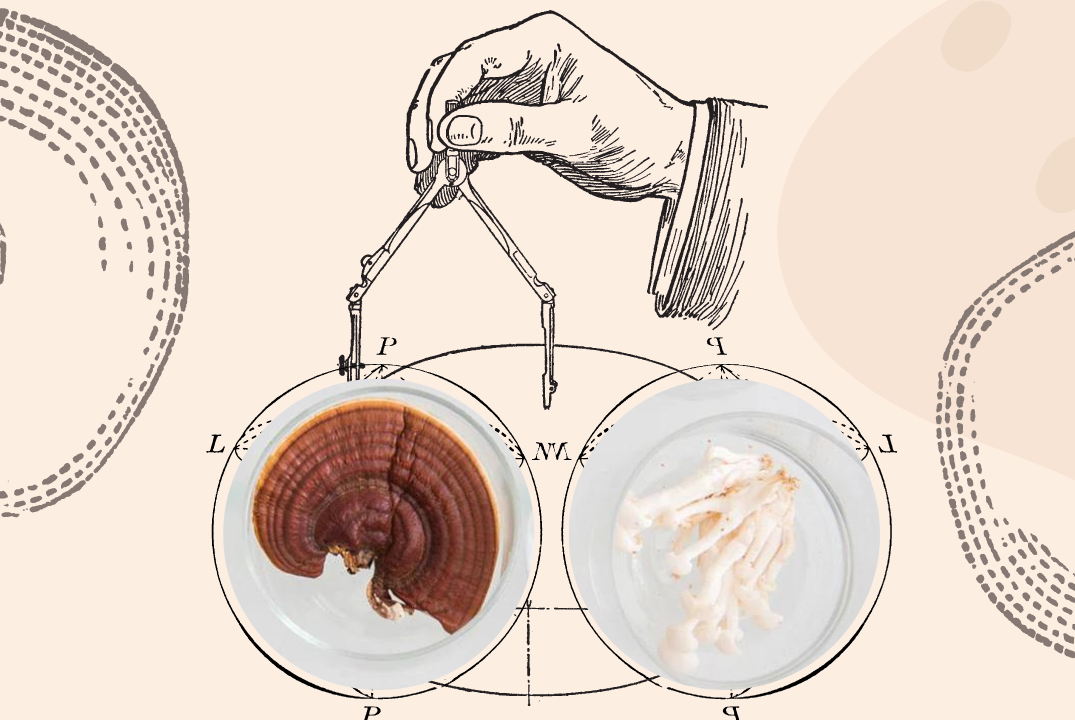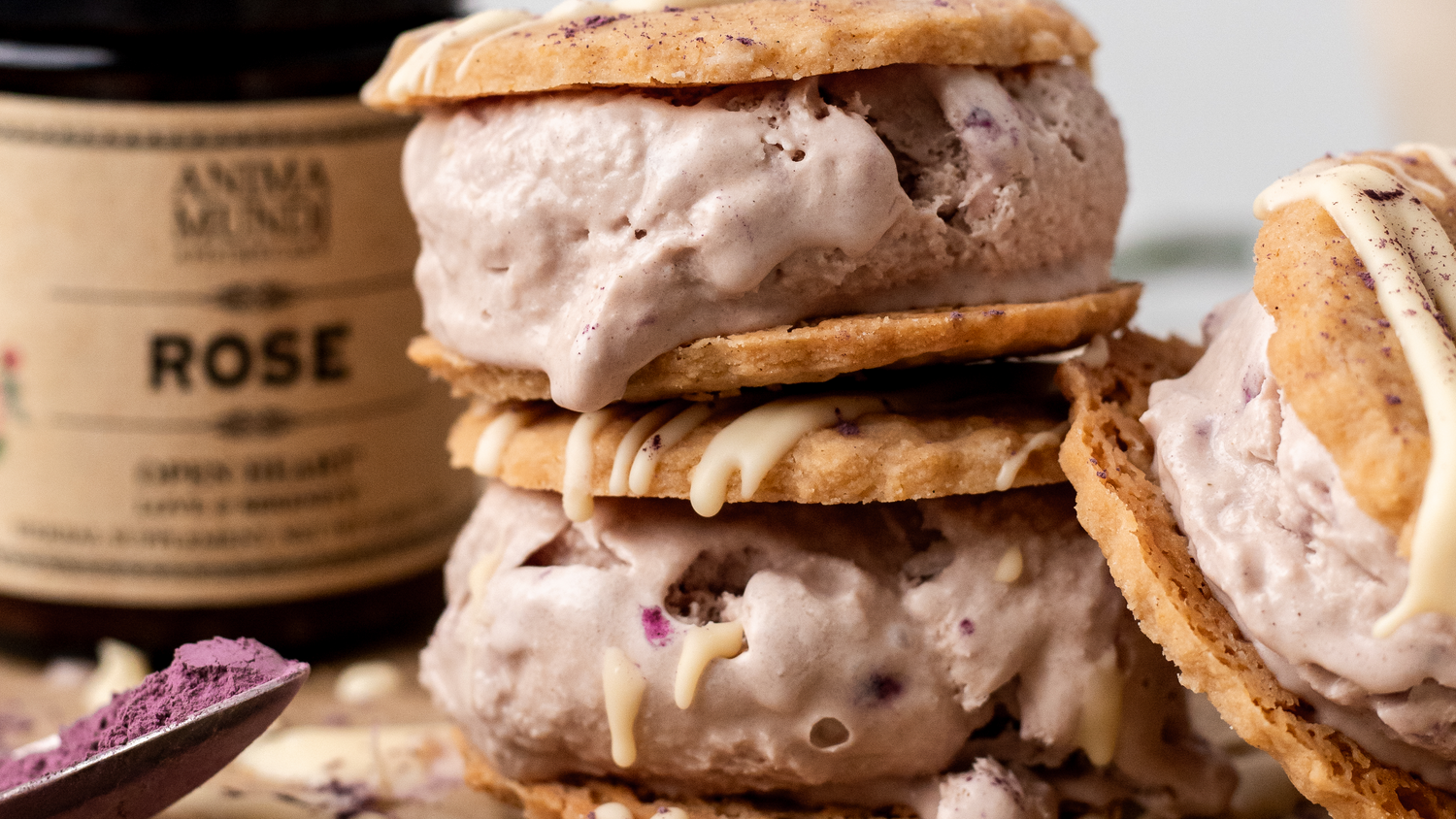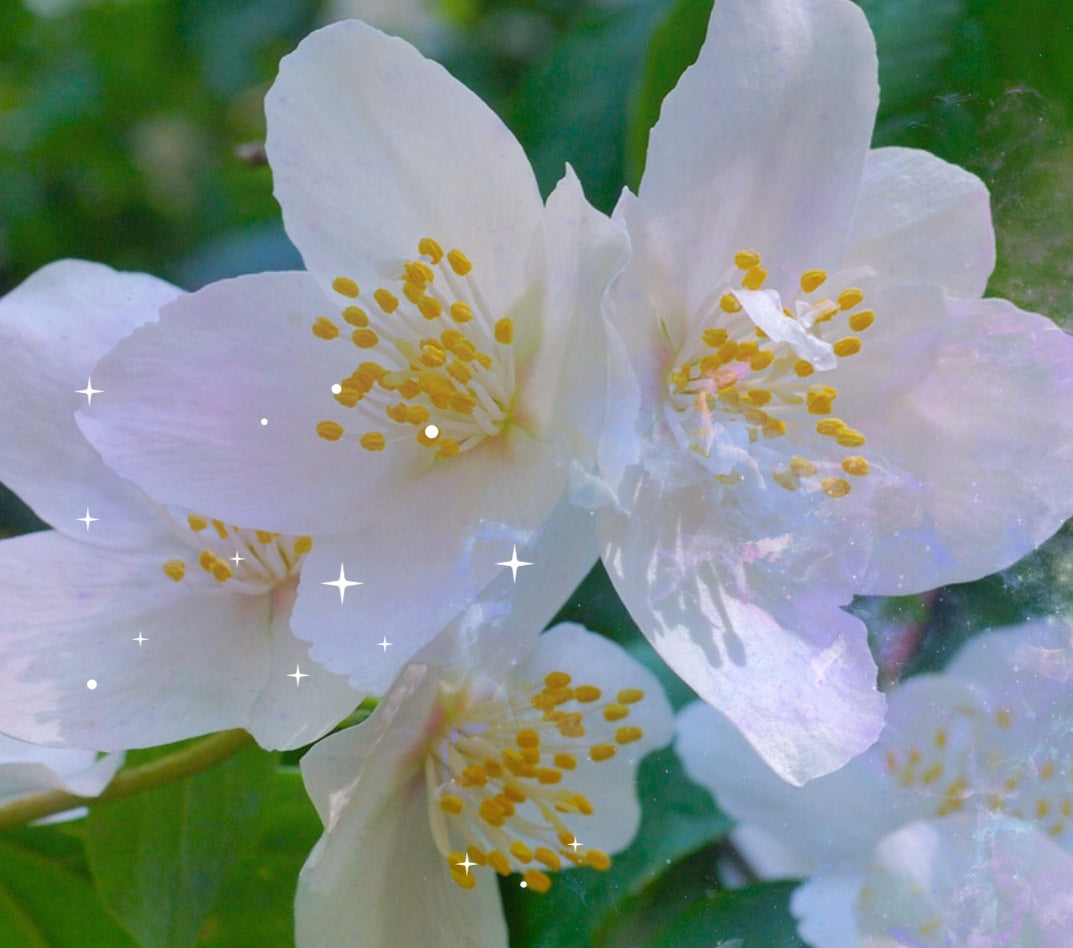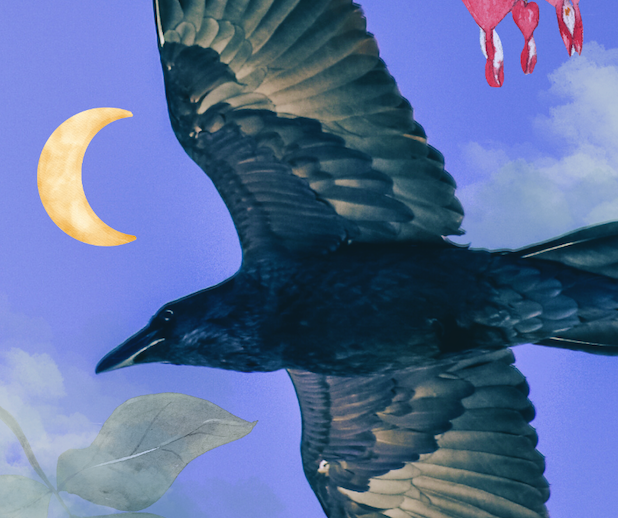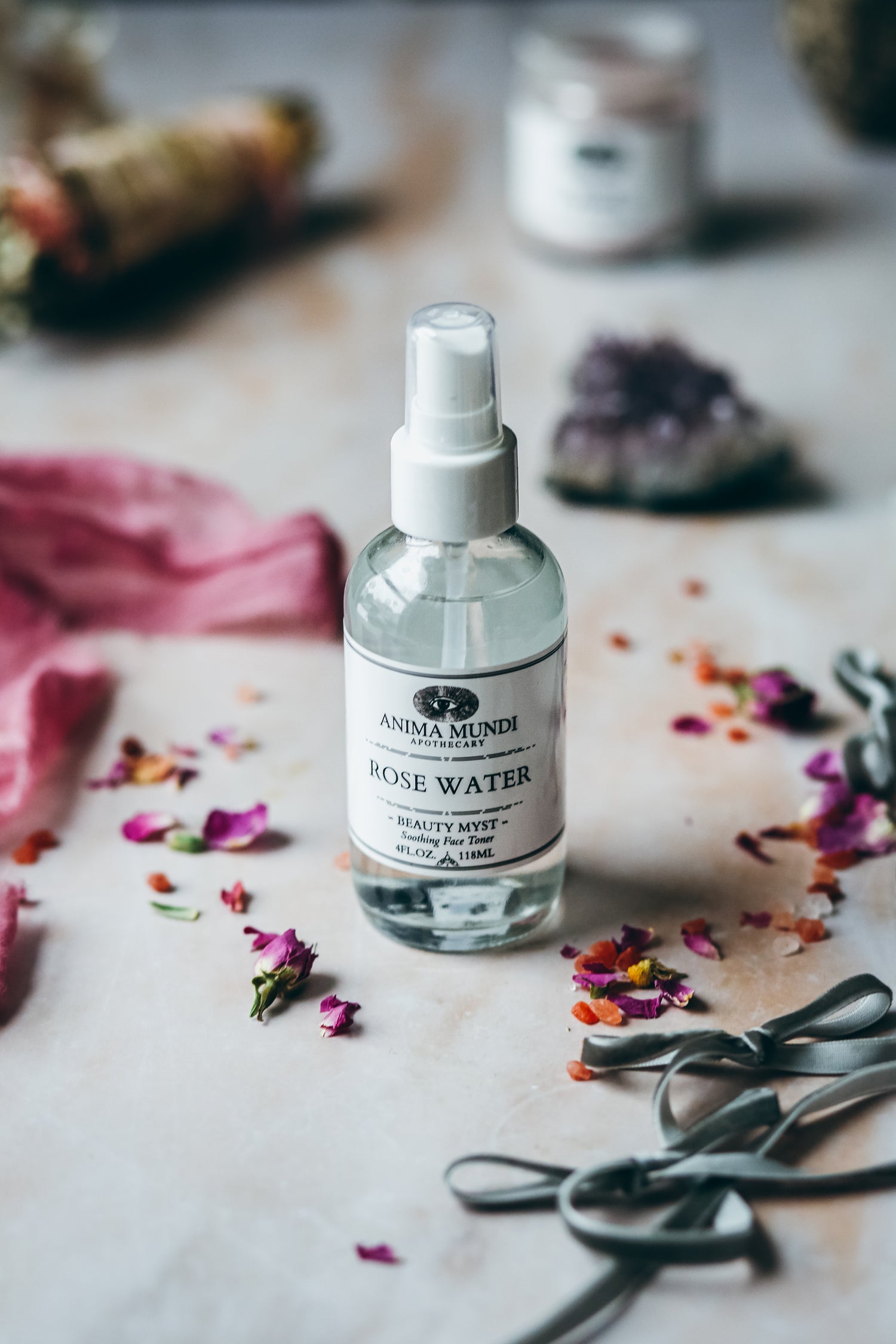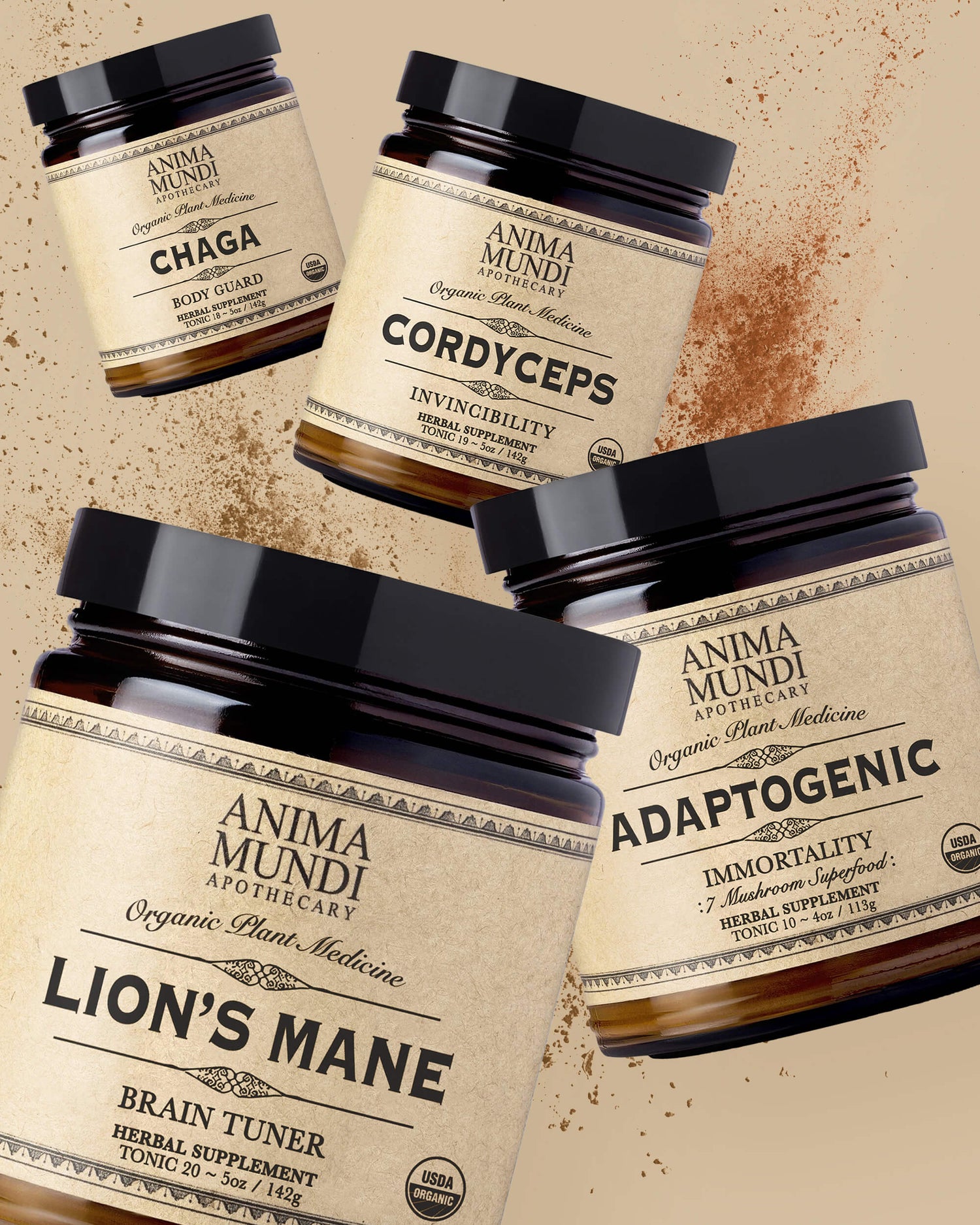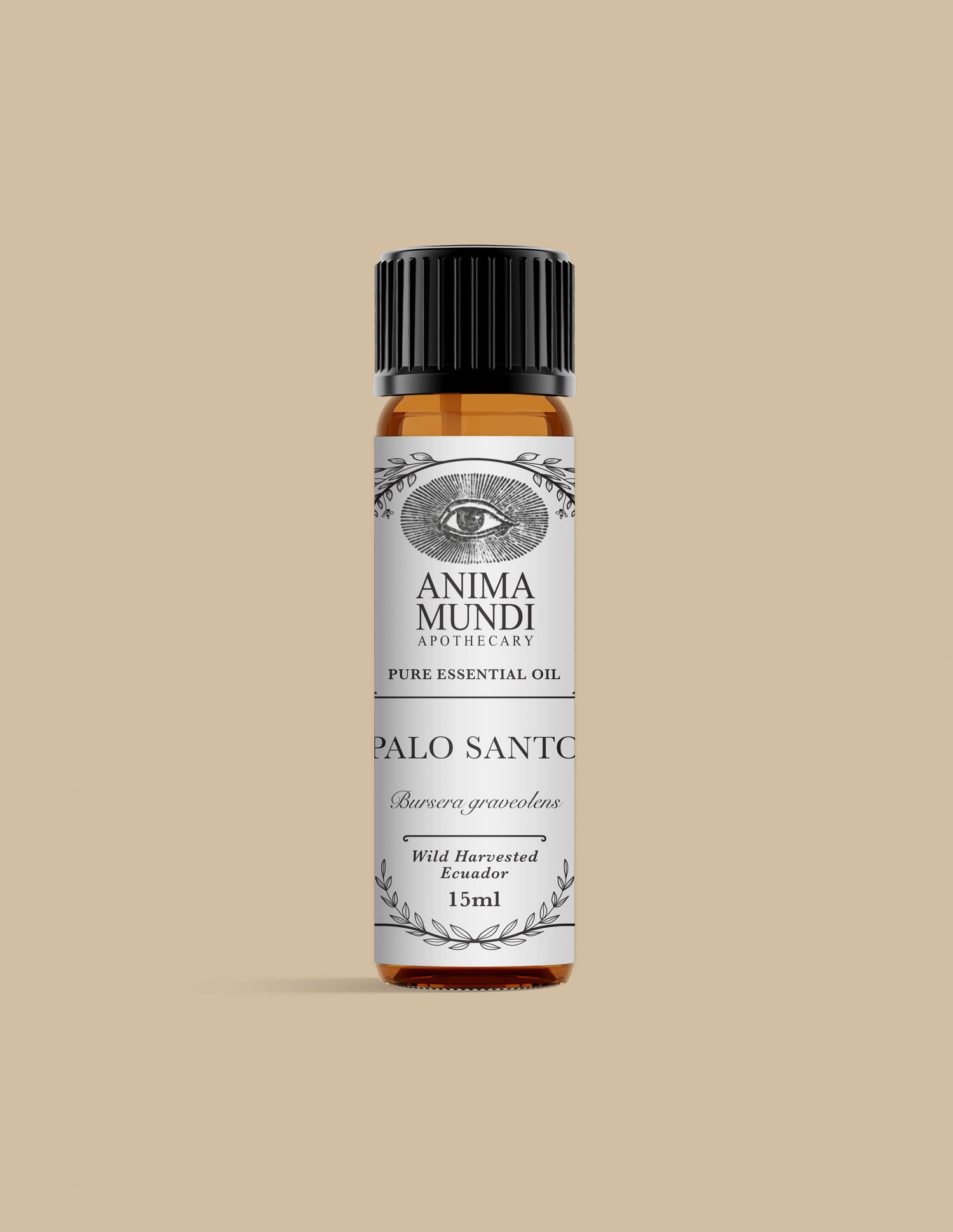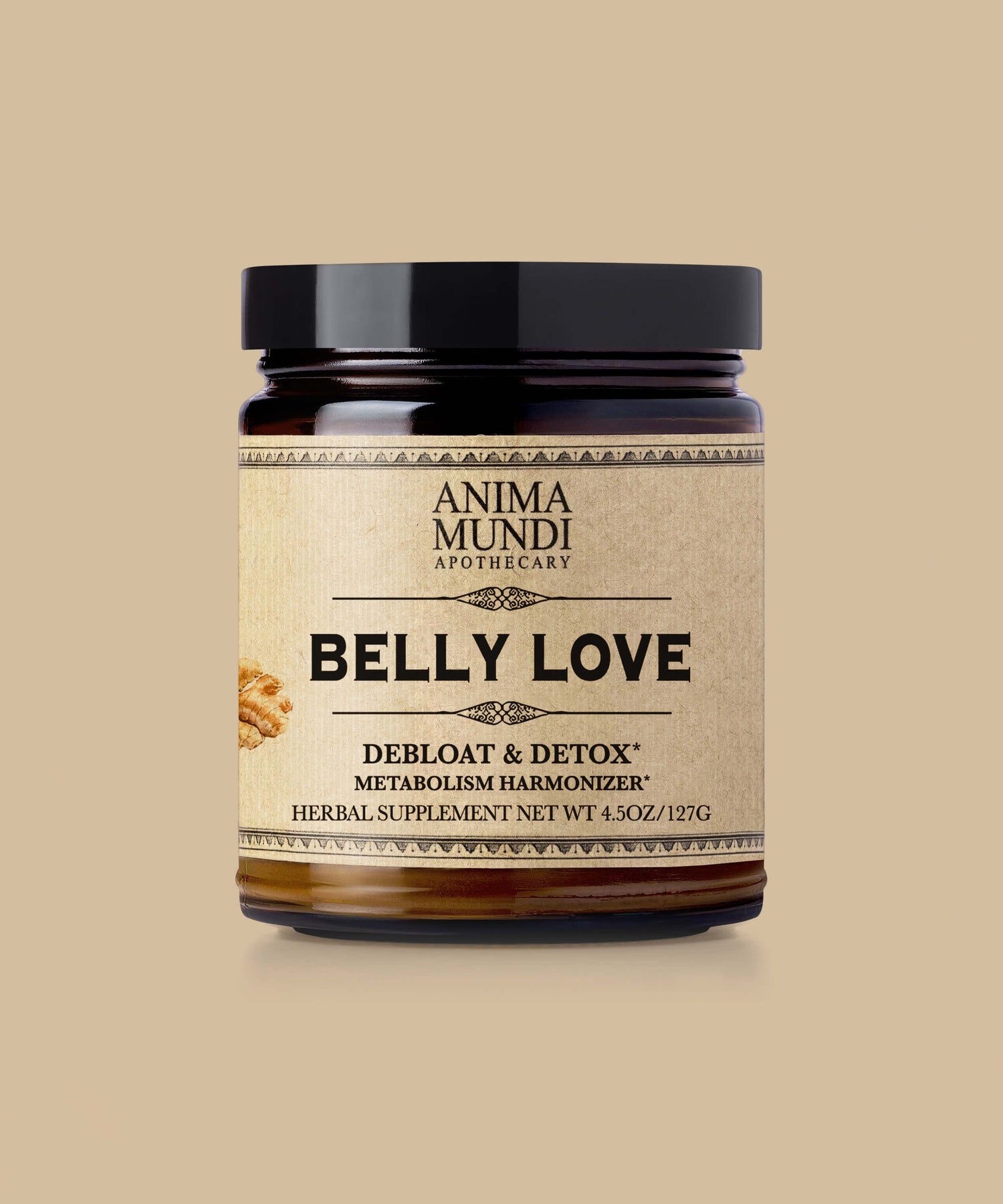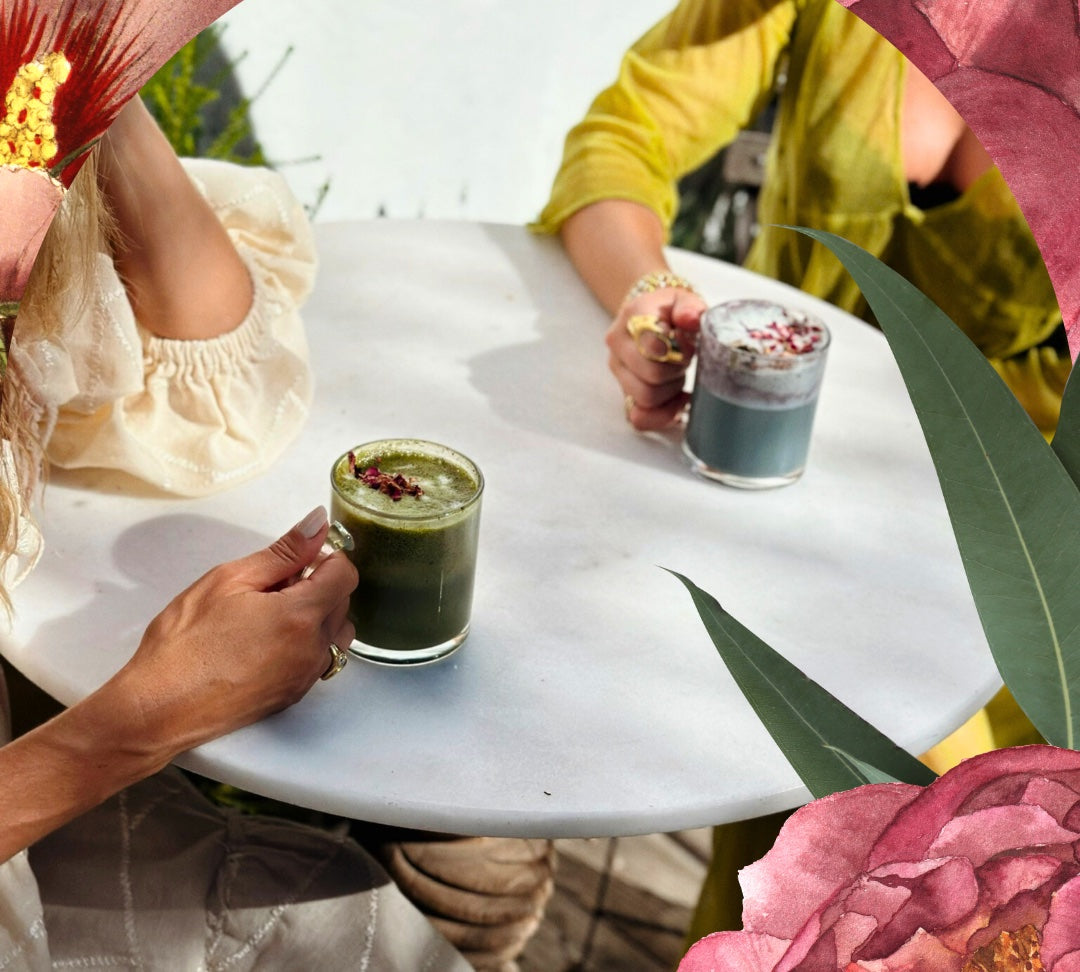In celebration of L.G.B.T.Q.I.A.+ Pride Month (a.k.a. Gay Pride!) we’re taking you for a swim in the deep ancestral waters of androgynous spirit guides, supportive herbs for queer folx, and some bonus plant allies for joy, pleasure, and mental health.
Sex, gender and sexuality have all historically shared a complex relationship with the knowledge, usage, and communal sharing of medicinal plants around the world. While these relationships ultimately come down to who is and is not given access to certain resources (like women only being able to know what applies to the home, cooking, etc.), they are also indivisible from race, class, socioeconomic status, and systemic factors.
How can queer folxs make the most of herbs to affirm their complex identities?
Entire doctoral theses could be crafted on the topic of supportive herbs for L.G.B.T.Q.I.A.+ folx. Indeed, there are even scholarly articles just unpacking the queer history of flowers. But as an herbal apothecary, we’re centering our sights on whole person wellness today, something that our queer communities are often denied when our humanity is seen as “other”, strange, dangerous, or “less than” by the society at large. We hope that by tackling a topic many would avoid and examining both historical and pleasure-centric parts, we can assist our queer siblings in leading fuller, happier lives in community with plants.

“People who leave behind traditional gender roles become bridges to the Other,”
writes Randy P.L. Conner in Men-Women, Gatekeepers, and Fairy Mounds.
Gender expression that breaks through the boundaries of the masculine-feminine duality isn’t limited to just one culture or period of history. In other words, they, them, and we have always been here, and have contributed to the deep healing of individuals and communities. One term for this phenomenon coined by the cultural anthropologist Victor Turner is “threshold persons”. Such deities are said to move fluidly between worlds and journeys; their erotic diversity manifests in both same-sex and transgendered intimacy, according to Conner. Most fascinating is the threshold persons’ ability to “traverse liminal regions which might otherwise prove unnavigable”, as these revered guardians and guides are not seen as pariahs as are queer folx in the modern world. Their special qualities allow them to float and weave between barriers, transgressing margins in service to the greater good.
Drawing from Cassell’s Encyclopedia of Queer Myth, Symbol, and Spirit, Conner opens the window into several different threshold archetypes across borders. Here, we highlight a few ancestral practices of queer shamanism from various cultures to learn more about:
1 :: kwih-doh Kanyotsanyotse - archetypal, androgynous shaman
Examples around the world include:
-
The transgendered priestesses of the Mesopotamian Inanna-Ishtar, also known as sal-zikrum, “women-men,” or sinnishanu, “like women”
-
The galli or 49 gallae of the Greco-Roman goddess Rhea-Cybele, a.k.a. semi-viri, “halfmen,” or anandreies, “not men”
-
The Aleuts of northeastern Siberia’s gender-mixing shamans, called ne-uchica, “appareled like a woman” or yirka'la'ul, “males transformed into persons of the softer sex”
-
The Ishquicuink in Guatemala, males who assist curanderas (female healers) among the Kechki people, or a male who “sometimes acts like a man and sometimes like a woman”
-
The female-to-male shih fu (“stone maiden”) shamans of ancient China
-
The male-to-female wikiga-winagu of Okinawa, who undergo a ritual of winagunati, “becoming a woman”
-
The Dagara of Ghana, Ivory Coast, Togo, and Burkina Faso, androgynous, homoerotically-inclined, or bisexual individuals who serve their communities as threshold “gatekeepers” who ensure balance and peace between the sexes
-
The gender-mixing, homoerotically inclined ha-na of the Mazatecs of Mexico
“You decide that you will be a gatekeeper before you are born,” writes the Dagara diviner Malidoma Some. “So when you arrive here, you begin to vibrate in a way that Elders can detect as meaning that you are connected with a gateway somewhere.”
But here is where celebrating Pride feels the most palpable: the Dagara Some is writing about also believe that without such gatekeepers, “Mother Earth will shake” and the apocalypse is near … a world without queer folx is indeed a troubled one!
2 :: Rites of Passage - becoming a ‘threshold person’
Examples across cultures include:
-
The Tewa of North America traditionally held rituals to expand gender fluidity, which also incorporated metamorphosis, such as men and women collectively responding “yes” to being asked if they are a man, then again together to affirm they are a woman, to which the shaman responded: “If you are a man, and if you are a woman, then you can be a bear.”
-
Western festivities such as Carnival, Mardi Gras, and Halloween, where transvestism is explored, though not always responsibly, even while the origins of such spiritual happenings have been erased.
3 :: Androgynous Deities in History
Examples from diverse religions and spiritual practices include:
-
The Mediterranean Artemis/Diana, “the one who loses” or sets free, metamorphoses into wolves and bears, and patron of “all those who live outside the social order”
-
The Legba of West Africa, revered in Voudon, guardian and guide to traverse the worlds of the living, the dead, and the Iwas (gods); their temple, the potomitan, has both phallus and womb represented in its central pole.
-
The Hindu Ganesha blurs gender norms with the head of a female elephant and the plump torso of a human male. Also associated with homoeroticism.
For more information, read Queering Herbalism by Queer Herbalism blog founder, Toi. Much of the information above was adapted from the many voices included in Toi’s excellent queer revue.

People often ask the Anima Mundi herbalists about the intricacies of estrogen and testosterone. Beyond the ins and outs of gender-affirming wellness, these herbs can also help give our hormones a boost in whatever direction we desire. For those seeking plant allies to support their journeys of strengthening gender identity, or experiencing an under abundance in desired hormones for a variety of other reasons, these herbs are for you!

- Chaste Berry is used to treat a variety of menstrual pain and cycle issues, in addition to menopause. These berries are also progesterone stimuli, the hormone that rises two weeks prior to menstruation. It also may help normalize both progesterone and estrogen levels.
-
Black Cohosh is a medicinal root used to treat estrogen-related disorders. However, it’s important to note that it can increase the effects of estrogen in some parts of the body while decreasing its effects in other parts.
-
Suma is a Brazilian ginseng and adaptogen known in South America as para toda, or “for all things”, in addition to being a sexual and general tonic. Aphrodisiac, calming agent, and ulcer treater, suma is also believed to possibly increase both estrogen and female fertility.
-
Dong Quai has a range of treatment possibilities, from premature ejaculation to premenstrual syndrome, as well as menopause, menstrual cramps, and high blood pressure. Like with all supplements, its side effects, drug interactions, and pregnancy safety must be evaluated carefully prior to consuming.
-
Red Clover has been scientifically proven to contain isoflavones, which are plant-based chemicals that produce “estrogen-like effects in the body”.

-
Horny Goat Weed has been shown to increase testosterone levels, which can also be beneficial for bone health in moderation.
-
Ashwagandha is known for boosting testosterone levels, improving sperm quality, and DHEA (a testosterone precursor produced by the adrenal glands).
-
Muira Puama has been used in Asia and in Amazonian folk medicine, specifically as a “potency wood” for hard penises and increased libido. A testosterone “activator”, muira puama is rich in sterols like sitosterol, campesterol, and lupol, which turn on the body’s hormone receptors.
-
Maca is a well known ‘estrogen-blocker.’ Celebrated for its libido boosting properties (hello, testosterone!). It’s also a powerful plant ally for menopausal women, for balancing hormonal secretion, stimulating metabolism, increasing energy levels, and reducing stress and depression.
-
Pine Pollen (and bark) is believed to contain testosterone; specifically, in the pollen of the Scots pine (Pinus sylvestris), which contains 0.8 micrograms of the hormone for every 10 grams of pollen.
-
Nettle has been cited in numerous studies in both humans and animals as having a positive effect on testosterone production and boosting with fewer side effects and a longer history of proven results than other herbs.
-
Catuaba bark can get your sex drive going by stimulating blood flow to the genitals and prolonging erections, sexual excitement, and even the power of orgasms! Lifting energy, mood, and focus, it’s also capable of producing more testosterone, kicking fatigue, and sharpening your memory.

Androgens are a group of sex hormones.
These hormones are responsible for kick-starting puberty, and play key roles in both reproductive health and body development. All genders produce androgens, making them critical for everyone’s hormonal health. Below are two plants that are widely beloved, used by many cultures and healers. Both have the capacity to contribute positively to androgen synthesis. Notably, androgens have two primary effects, anabolic and androgenic. Androgenic effects include “sexual” characteristics, and anabolic effects primarily impact muscle and bone growth.
-
Mucuna pruriens’ research shows that it greatly increases testosterone production, while improving male fertility. It has also been shown to increase LH, FSH, HGH, and general testosterone levels. Mucuna lowers prolactin levels, the hormone responsible for lactation and milk production.
-
Nettle Root is popularly used as a prostate tonic, and is a well known estrogen blocker. Nettle inhibits and lowers DHT, an androgen hormone and sex steroid, which is created as a byproduct of testosterone. Nettle also supports the reduction of sebum production nicely, even shrinking sebaceous glands. This lends to its ability to strengthen hair and prevent hair loss. However, if using other herbs, nutritional supplements, or drugs that increase androgen (male sex hormones) levels, or if the body has an excess of estrogen or an under abundance of testosterone, please be cautious and pair it with complementary herbs under the guidance of an herbalist or other trusted health professional.


A healthy mind is critical to the functioning of a healthy body, spirit, and heart.
The often-emphasized “mind-body connection” in traditional medicine isn’t just a catchy phrase, especially for queer folx, who often struggle with issues ranging from body dysmorphia to shame, in addition to a range of feelings of not being at home in their sacred bodies. Too often, our physical health is prioritized and seen as the more valuable equation.
Today’s reminder is to make time to care for your mind.
Remembering that L.G.B.T.Q.I.A.+ communities experience disproportionately higher rates of depression, PTSD, anxiety, and attempted suicides, we urge you to continue supporting queer folx all 365 days of the year, not just during Gay Pride Month. That includes your own wellbeing, which should be cherished, nourished, and celebrated every possible moment. Plants are here to help.
Read more about the five most common mental health disorders, related symptoms, and herbs that have been used historically to treat these conditions on the Anima Mundi blog: A Healing Guide for Mental Health and 5 Herbs to Help Rewire Anxiety and Depression.
Happy Pride to all!
This article was written in collaboration with,
Simone Jacobson
Dubbed a “Cultural Connector” by Washington CityPaper and “the cultural connector D.C. needs right now” by Bon Appétit magazine, Simone Jacobson is a multipotentialite who has dedicated her career to serving marginalized groups, promoting youth development, Asian American advancement, women in leadership, and the arts. Simone has also committed her time to making yoga more inclusive at correctional facilities, outdoor spaces, and public libraries. In addition to teaching meditation and yoga at the D.C. jail, and at classes like “Yoga for Every Body”--which extended intentional invitations to people of color, queer and trans folks--she led Diversity, Equity & Inclusion for Yoga District’s yoga teacher training program.
Read more about Simone's work here.
DISCLAIMER: This content is not intended to encourage self-diagnosis and is purely informational in nature. We do not suggest any of these herbs be used in place of other medications or as medicinal alternatives. We do suggest you work with your chosen herbalist, healer and/or physician to best integrate supportive herbs into your monthly routines. Please use plant medicines carefully and intentionally. Discuss any doubts directly with a healthcare professional, especially if you are currently taking medication.








